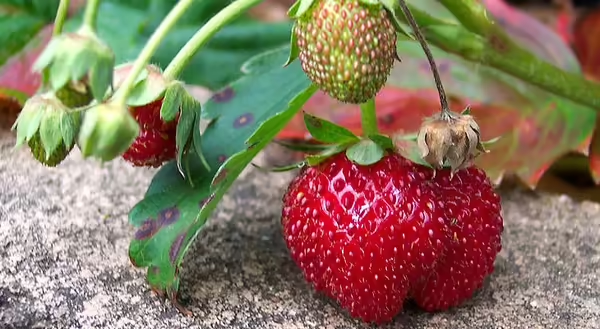
Summer is here!
As we approach the halfway mark for the month of June and look forward to summer plans, one thing many people are excited about is summer strawberries. Whether you are growing everbearing or June-bearing strawberries, harvest time is here for some and on its way for others.
Strawberry varieties
June-bearing strawberries, depending on the variety, can bear fruit from early June through the Fourth of July. All four of these berries are noted for their taste, texture, suitability for being grown in Illinois
- Earliglow is one of the earliest varieties suggested for Illinois and produces medium-large, firm, red berries.
- Honeoye and Allstar are two mid-June strawberries and they both produce large berries.
- Jewel is a late June strawberry with a large berry known for being slow to rot while in storage.
How to fertilize your strawberries
Fertilize your June-bearing strawberries with one pound of a balanced fertilizer (10-10-10, 12-12-12) per 100 feet of row. If you are doing less than 100 feet of row, follow label directions for application amount. Overfertilization can cause excessive vegetative growth, reduce yields and leave the plant more susceptible to injury or loss. Here are the times you should fertilize June-bearing strawberries.
- Before planting
- The first growing season
- Every year at renovation time.
What is renovation?
Renovation is an important part of growing June-bearing strawberries. Renovation is the removal of foliage after fruiting has occurred to allow the perennial crown to produce new disease-free foliage. Renovation helps to ensure good fruit production the following year, reduced disease potential, and allows rows to be narrowed for ease of care and maintenance.
How to renovate strawberries
To renovate either remove foliage by hand or mow it off one inch above the crowns. Discard trimmings in yard waste or burn it. It is not recommended to compost foliage because of the potential for disease. Narrow row width to 6-12 inches, remove runners, and apply fertilizer as mentioned above. This also gives you the opportunity to eliminate any weeds by hoeing, cultivating, or hand pulling. If you apply any herbicide to control weeds, follow all label instructions and “bee” conscious of pollinators.
Within several days after mowing, new yellow-green foliage will begin pushing up. Don’t be alarmed at the color, the new foliage has yet to develop a full complement of chlorophyll. Before you know it you will have that dark green foliage that comes to mind when you think of strawberries!
More about strawberries
- In the garden: For more information about growing strawberries or more suggested varieties for Illinois, visit web.extension.illinois.edu/strawberries.
- In the kitchen: For recipes involving strawberries and other ingredients, visit eat-move-save.extension.illinois.edu/eat/recipes.